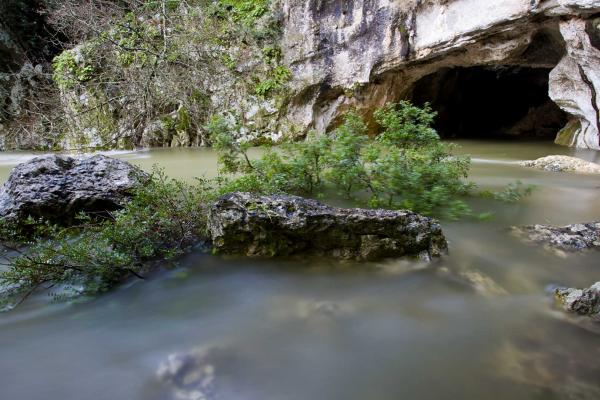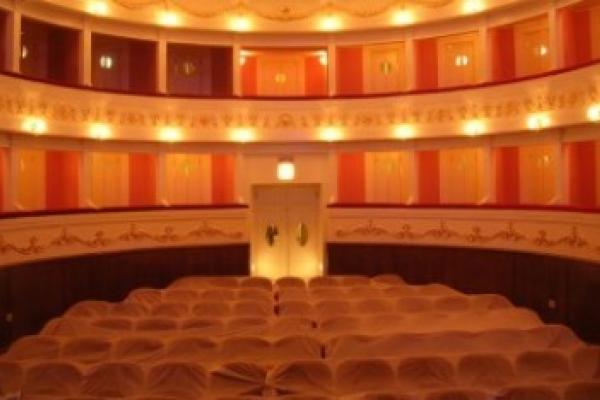The church is entered via a double staircase positioned along the façade, which appears majestically, split vertically and horizontally in three parts by pilasters and cornices, concluding with a curvilinear tympanum. Rising up on the left is a square-shaped bell tower, topped by a small dome that recalls styles hailing from across the Alps. Sant’Ignazio di Loyola was erected in the historic centre of Oliena between the 17th and 18th centuries as part of a project by the master builder Domenico Spotorno on behalf of the Company of Jesus. The construction works of the Jesuit church and college lasted more than a century (1644-1758), hence the current structure is fundamentally of the 18th century. The vast interior space consists in a nave with three chapels on each side, separated by pillars supporting a jutting cornice, which serves as a barrel vault.

See this place because...
To be discovered is the majestic architecture that rules over a place with a thousand naturalistic and cultural attractions, which preserves a deep devotion amongst its traditions
Nearby
Dopo Nuoro si prosegue per la SS 127, seguendo le indicazioni si passa sulla SP 22 e si raggiunge Oliena. Il contesto ambientale Il complesso dell'ex-convento gesuitico e la parrocchiale di Sant'Ignazio si trovano nel centro storico, percorrendo la via principale si arriva facilmente agli edifici. Descrizione I Gesuiti, giunti in Sardegna nei primi decenni del Cinqucento, nel 1588 avevano già quattro collegi corrispondenti a quattro delle sette città regie (Cagliari, Sassari, Iglesias, Alghero). Dalla seconda metà del Seicento a questi centri si aggiunse quello di Oliena, fondato grazie al lascito testamentario di due Olianesi. La chiesa fu edificata alla fine del Seicento dal capomastro ligure Domenico Spotorno ma il suo assetto è fondamentalmente settecentesco. La facciata è suddivisa in tre parti da lesene verticali e si conclude con un timpano curvilineo. Il prospetto ha portale e finestra in asse. Una doppia scalinata permette l'accesso al Santuario mentre molto curiosa è la cupoletta del campanile che richiama stilemi d'Oltralpe. Nell'interno ben calibrato viene rispettato il cosiddetto "modonostro" gesuitico, cioè una certa normativa secentesca che regola il numero e la disposizione delle cappelle, tre per parte. Anche la funzione di collegamento con la casa del Collegio è sottolineata dal matroneo-cantoria che si affaccia sul presbiterio sopraelevato. Gli altari sono schiacciati contro le pareti di fondo delle cappelle e costruiti in stucco chiaro su disegni di schema manieristico. Un cornicione aggettante percorre tutto il perimetro della navata. un arco trionfale immette nella zona presbiteriale, dove, all'interno di una nicchia d'altare di gusto neoclassico, è collocata la statua di Sant'Ignazio eseguita secondo un modello iconografico molto diffuso nel Seicento nell'isola. Nelle nicchie degli altari si trovano statue lignee databili dal XVII al XVIII secolo, come il San Michele Arcangelo dello scultore Monserrato Carena, o la statua di San Francesco Saverio, compatrono del paese, proveniente dalla Campania e databile alla seconda metà del XVII secolo. Nelle pareti spiccano alcune tele eseguite da artisti contemporanei. Nel Convento annesso alla parrocchiale, durante il recente restauro sono state ritrovate tempere murali, alcune delle quali lasciate incompiute, probabilmente per l'improvvisa partenza dei Gesuiti. Nella sala dove si trovava l'antico refettorio, oggi è ospitata una preziosa pinacoteca con tele del Seicento e importanti manufatti seicenteschi dell'artigianato locale. All'interno dell'ex-collegio è conservato il retablo di San Cristoforo, ascritto al maestro di Oliena e datato al secondo quarto del XVI secolo. Inoltre vi è una galleria di statue lignee di notevole importanza, come il Cristo de s'iscravamentu, datato tra la fine del XV e la prima metà del XVI secolo, opera forse di scultore catalano. Bisogna ricordare che dentro il paese di Oliena si trovano undici chiese, ma solamente in due si officia la messa: nella parrocchiale e nella chiesa di Santa Maria che conserva intatte le strutture gotico-aragonesi, risalenti al XV secolo. Storia degli studi Notizie sulla chiesa si trovano nel volume di Salvatore Naitza dedicato all'architettura dal tardo Seicento al classicismo purista. Bibliografia M.G. Scano, [i]Pittura e scultura del '600 e del '700[/i], collana "Storia dell'arte in Sardegna", Nuoro, Ilisso, 1991. S. Naitza, [i]Architettura dal tardo '600 al Classicismo purista[/i], collana "Storia dell'arte in Sardegna", Nuoro, Ilisso, 1992, pp. 147, 205, 230.












